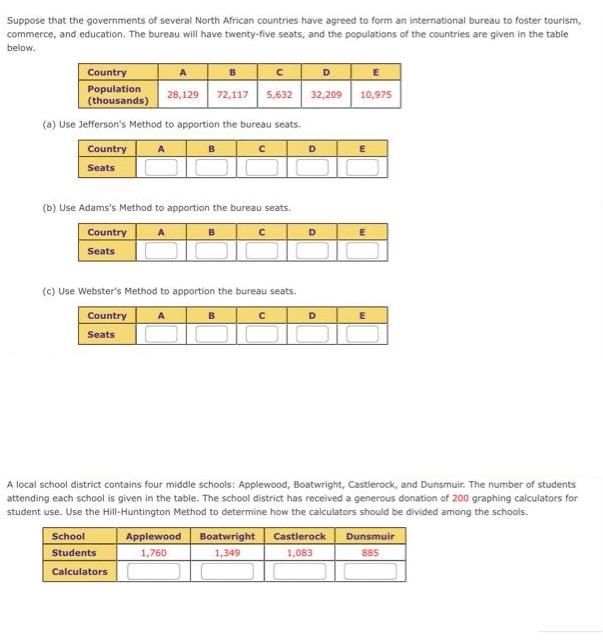Answered step by step
Verified Expert Solution
Question
1 Approved Answer
Suppose that the governments of several North African countries have agreed to form an international bureau to foster tourism, commerce, and education. The bureau

Suppose that the governments of several North African countries have agreed to form an international bureau to foster tourism, commerce, and education. The bureau will have twenty-five seats, and the populations of the countries are given in the table below. Country Population (thousands) (a) Use Jefferson's Method to apportion the bureau seats. Country Seats A 28,129 72,117 5,632 32,209 (b) Use Adams's Method to apportion the bureau seats. Country Seats School Students Calculators A (c) Use Webster's Method to apportion the bureau seats. Country Seats B D D D E 10,975 Applewood Boatwright Castlerock 1,760 1,083 1,349 E A local school district contains four middle schools: Applewood, Boatwright, Castlerock, and Dunsmuir. The number of students attending each school is given in the table. The school district has received a generous donation of 200 graphing calculators for student use. Use the Hill-Huntington Method to determine how the calculators should be divided among the schools. E Dunsmuir 885
Step by Step Solution
★★★★★
3.28 Rating (145 Votes )
There are 3 Steps involved in it
Step: 1
To solve these problems well use the given population num...
Get Instant Access to Expert-Tailored Solutions
See step-by-step solutions with expert insights and AI powered tools for academic success
Step: 2

Step: 3

Ace Your Homework with AI
Get the answers you need in no time with our AI-driven, step-by-step assistance
Get Started


